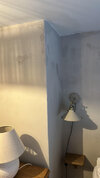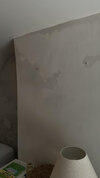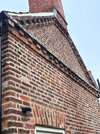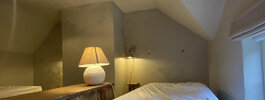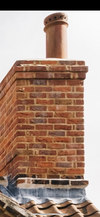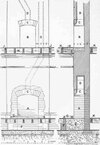We have decorative brickwork on a gable end period cottage. In 2020 a total renovation was carried out. As part of this a new chimney stack was built, the original roof tiles were taken off, and a new roof membrane laid with the original tiles put back on, lead around stack. The brickwork on gable end was all repointed with a lime mortar. Inside the old plaster was mostly hacked off and the bedroom was then lime plastered. It has always had a little bit of damp evident on patches which come and go which in the last couple of weeks has got significantly worse due to rain.
We thought maybe the patches on the walls (and a surveyor we contacted who didnt end up coming out just told us this was likely what the patches were) was the lime plaster chemically reacting to historic soot of the chimney breast (this was sweeped out in 2020 also before the renovation works) rather than a leak or penetrating damp but now wondering if this was incorrect.
We have run a moisture meter over the damp patches which appeared on the ceiling line inside the bedroom and they read high so suggests a roof leak or water coming in through the mortar? Yet when we go in the roof we cant find a source of a leak on the roof as the timbers are dry.
Has anyone got any suggestions?!
We thought maybe the patches on the walls (and a surveyor we contacted who didnt end up coming out just told us this was likely what the patches were) was the lime plaster chemically reacting to historic soot of the chimney breast (this was sweeped out in 2020 also before the renovation works) rather than a leak or penetrating damp but now wondering if this was incorrect.
We have run a moisture meter over the damp patches which appeared on the ceiling line inside the bedroom and they read high so suggests a roof leak or water coming in through the mortar? Yet when we go in the roof we cant find a source of a leak on the roof as the timbers are dry.
Has anyone got any suggestions?!


